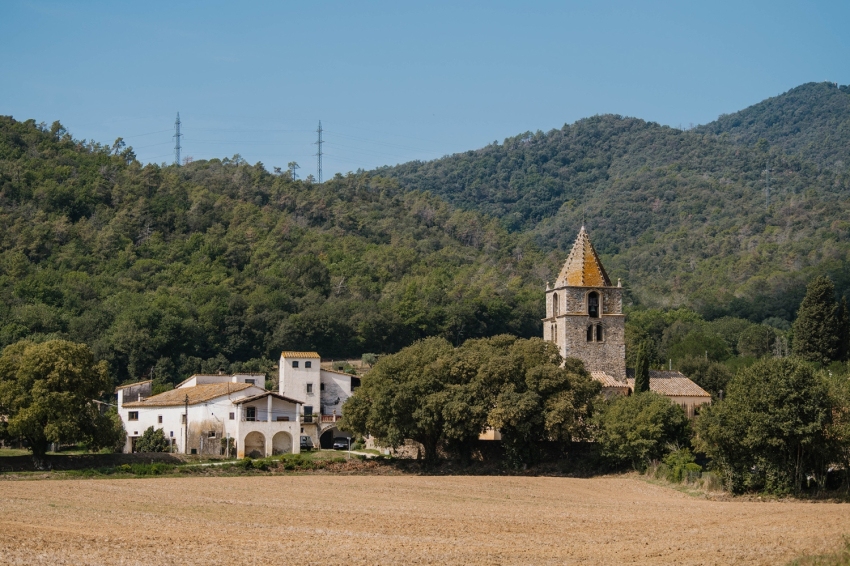Gironès
The Gironès is a region located halfway between the sea and the mountains, which includes 27 municipalities spread across valleys, hills and plains. Girona is its capital, and a visit to it is as essential as it is seductive. As for the towns, it can be said that they have managed to maintain their own essence and personality, making them interesting destinations for all types of visitors...
Girona, the city that excites
A visit to the capital of the Girona region is as essential as it is seductive. A city with two thousand years of history, an enviable heritage and one of the most interesting and evocative medieval centres in Catalonia. The old quarter is home to monuments such as the Cathedral, the Basilica of Sant Félix, the Arab Baths, the walls and the Jewish quarter, with a mix of architectural styles. The city combines its historical charm with a modern and dynamic life, rich in leisure, gastronomy and culture, with festivals throughout the year. Girona has also shone on the screen, appearing in films and series such as Perfume and Game of Thrones.
Medieval villages and heritage
The history and heritage of the medieval period are a reality that is still very visible throughout the Gironès. The medieval towns of Madremanya, Sant Martí Vell, Cervià de Ter, Flaçà, Llorà ( Sant Martí de Llémena ) and Llagostera stand out.
The worship spaces also show the architectural legacy of the Gironès with monasteries such as Sant Pere de Galligants and Sant Daniel, in Girona, or the priory of Santa María de Cervià de Ter. Among the many hermitages scattered throughout the territory, the hermitages of the Llémena Valley stand out, that of San Grau in Sant Gregori, that of San Roque in Vilablareix, or that of San Cristóbal del Bosque in Llambilles.
The Gironès also preserves important sanctuaries such as Rocacorba in the Llémena Valley and the Sanctuary of the Angels in Sant Martí Vell, where Salvador Dalí and Gala were secretly married in 1958.
Ancient times: Archaeological sites
In the Gironès there are numerous archaeological remains that reflect its past from the megalithic era to the Roman and medieval periods. The Castellum Fractum site in Sant Julià de Ramis stands out, a late Roman fortress built on an ancient Iberian village. In Sarrià de Ter, the Roman villa of Pla de l'Horta is the best preserved suburban Roman villa in the northeast of the peninsula. The Torratxa de Vilablareix, a funerary monument from the 3rd century AD, is also notable for its excellent state of preservation.
All these sites have revealed interesting findings of what were the suburban Roman villas, closely related to the founding of Gerunda, the Roman name for the city of Girona.
Nature and landscapes
Situated between the sea and the mountains, this region offers a rich variety of landscapes, from cultivated plains along the River Ter and its tributaries to hills, mountains and volcanoes such as Puig de la Banya de Boc and Puig d'Adri, and the Crosa volcano, which has the largest crater on the Iberian Peninsula.
The cliffs with ancient sanctuaries offer spectacular views of the region and the neighbouring areas. Climbs such as Rocacorba, Puig de Cadiretes, or walks through the Gavarres provide exceptional viewpoints.
At the base of the peaks, the Gironès is characterised by quiet valleys such as the Xuncla, the Llémena Valley and the Sant Daniel Valley, which offer a haven of peace away from the industrial noise.
Pagesia, crafts and industry
The Gironès offers vast rural areas, such as the areas around Aiguaviva and Campllong, with farms that produce quality food, and also preserves traditional trades such as charcoal makers, cork makers, basket makers and potters. Some artisanal techniques have been converted into modern industries, such as the ceramics of Quart, the paper of Sarrià de Ter and the cork of Cassà de la Selva.
The industrial tradition is also reflected in places such as the Vinyals de Flaçà irrigation canal, the Bescanó hydroelectric power stations, and the Water Museum and the Monar de Salt irrigation canal, which preserve the industrial heritage of the region.
Nearby routes
See all routes »- Circular route through the south of… (a 1.3 km)
- Carrilet II adapted route: from Girona… (a 1.3 km)
- Flower and garden fairs (a 1.3 km)
- Route in the Sant Daniel Valley in… (a 1.3 km)
- Sports tourist destinations of Catalonia (a 1.3 km)




















